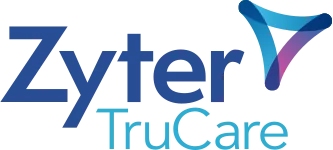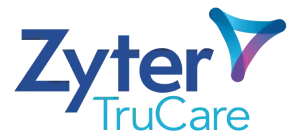- Kimesha Malone, RN, Clinical Business Success Consultant
For decades, menopause has existed on the periphery of healthcare priorities, rarely receiving the structured attention devoted to other pivotal stages in a woman’s life. Nearly 1.3 million women in the U.S. reach menopause each year, yet fewer than half report receiving structured guidance from their healthcare providers during this transition. Many clinicians recall that, even in nursing school, menopause was covered only briefly, often with an emphasis on the risks of hormone replacement therapy (HRT) and monitoring for osteoporosis. In practice, this lack of focus translates into limited support.
Many women who raise concerns about symptoms of perimenopause or menopause are met with dismissive responses such as, “It sounds like you’re in menopause. Have a good weekend.” Without proper guidance, they are left wondering what comes next.
A Missing Chapter in Women’s Health
While healthcare systems have developed comprehensive programs for puberty, pregnancy, and postpartum care, complete with educational materials, structured visits, and community support, menopause remains underrepresented. The imbalance is striking new mothers receive well-designed “welcome kits,” care plans, and proactive outreach, whereas women transitioning through menopause often navigate the experience in isolation.
Recently, menopause has begun to move into mainstream dialogue, thanks in part to public advocates like Oprah Winfrey and Halle Berry, who have helped spotlight the widespread impact of this life stage and the urgent need for better resources and care coordination.
Despite growing visibility, the healthcare infrastructure to support menopausal women remains fragmented. Many primary care and OB-GYN practices lack standardized screening tools, referral pathways, or digital resources for menopause management. For health plans, this represents a missed opportunity to engage a large member population proactively.
Addressing menopause through structured programs isn’t just about symptom relief; it’s about enabling preventive care, improving quality metrics, and fostering long-term member engagement. By integrating clinical data, behavioral insights, and outreach programs, payers and providers can reshape menopause care into an initiative that improves outcomes and reduces cost of care over time.
Envisioning a Comprehensive Menopause Management Program
What would a true Menopause Management Program look like?
Just as pregnancy programs provide structured education and tangible support, menopause programs could offer an equally thoughtful framework that is both clinical and practical.
A proposed “Welcome to Menopause” kit might include:
- Educational guides outlining what to expect during menopause, common symptoms, and evidence-based treatment options.
- Information to help distinguish between normal physiologic changes and symptoms requiring medical evaluation.
- Access to wellness and support initiatives focusing on strength, diet, and cardiovascular health.
- Guidance on monitoring key biomarkers such as iron, calcium, vitamin D, and hormone levels through regular lab work.
- Covered benefits for pelvic therapy and mental health support, promoting a holistic approach to their well-being.
And perhaps, instead of a diaper bag, women could receive a thoughtfully curated tote with practical essentials such as cooling garments, a handheld fan or cooling device, and educational resources, serving as symbols of validation and preparedness for this stage of life.
Looking ahead, establishing a dedicated ICD-10 classification for comprehensive menopause management could also help standardize recognition and reimbursement for these services, ensuring equitable attention to women’s health needs across all stages of life.
How Zyter|TruCare Can Support Menopause Care Management
A program like this requires more than awareness; it requires coordination, data insight, and proactive outreach. This is where Zyter|TruCare can make a meaningful difference.
- Structured Enrollment and Documentation: TruCare enables the creation and documentation of dedicated Menopause Care Management programs within a unified platform.
- Predictive and Person-Centered Care: Using agentic AI, TruCare can help identify members at risk or approaching menopause, offer predictive insights, and deliver tailored recommendations for symptom management, behavioral support, and closing care gaps.
- Interdisciplinary Collaboration: The platform facilitates integrated care involving behavioral health, clinical nursing, pharmacy, and social support, ensuring interventions are coordinated across all care domains.
- Provider Connectivity: Through coordinated care plans and shared documentation, TruCare bridges gaps between providers and care managers, reducing delays in care and improving follow-through, especially for members with complex or comorbid conditions.
- Improved Access and Engagement: According to a study from PennToday, many patients forego appointments due to long wait times or repeated transfers. By centralizing communication and care coordination, TruCare enables care managers to engage these members and prevent avoidable drop-offs in care proactively and reduce frequent emergency room visits.
Menopause deserves the same structured, compassionate, and evidence-based attention as every other stage of a woman’s health journey. With technology-enabled coordination and person-centered design, healthcare organizations can elevate this long-overlooked chapter into one of empowerment and proactive, revolutionary care.
Contact us to learn how Zyter|TruCare empowers clinicians and care managers to deliver coordinated, whole-person care programs that address women’s health across every stage of life.








